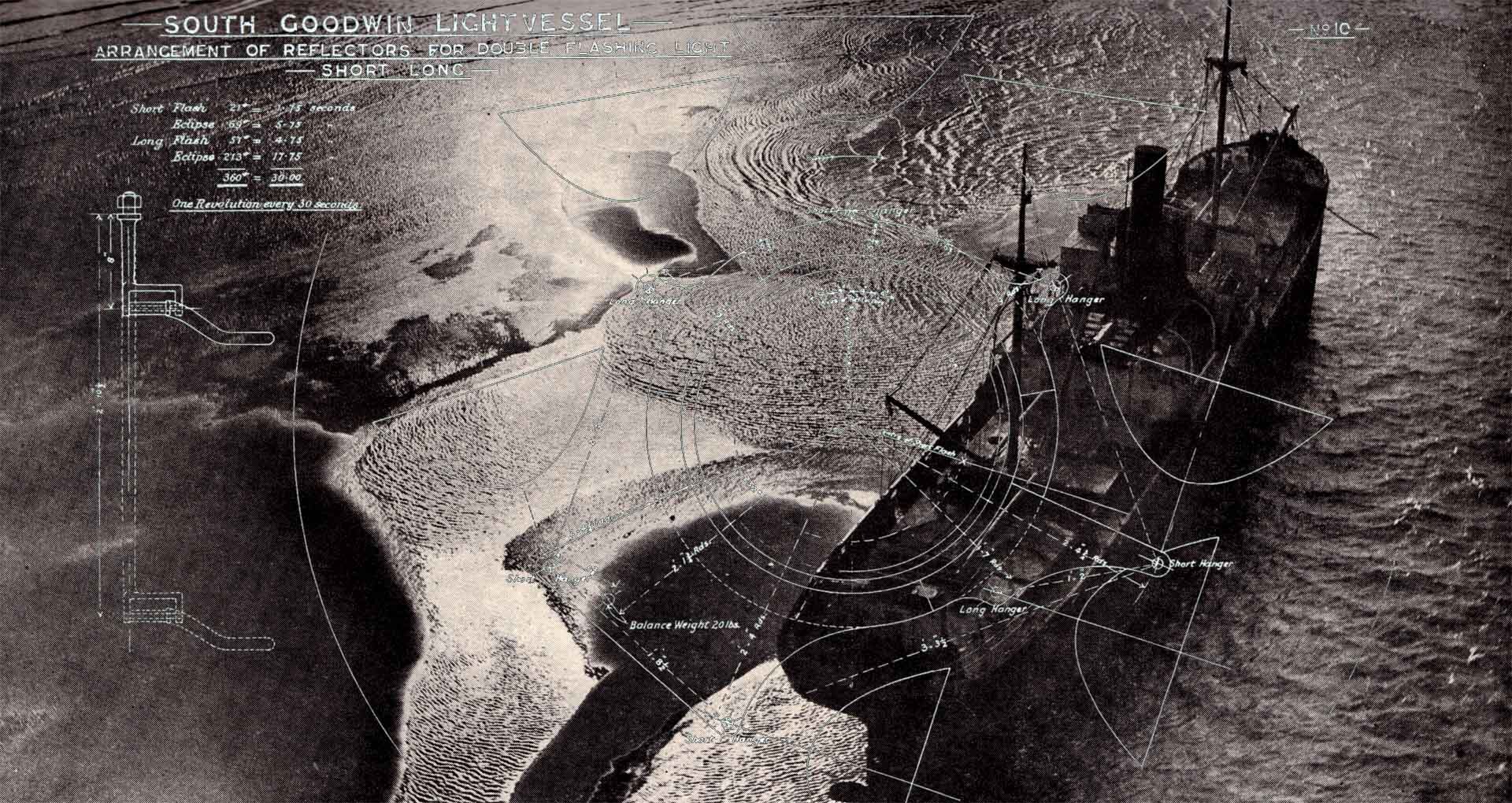
History of Lightship 95
Pray for those who were in ships, and
Ended their voyage on the sand, in the sea’s lips
Or in the dark throat which will not reject them
Or wherever cannot reach them the sound of the sea bell’s
Perpetual angelus.
- T.S. Eliot
(The Dry Salvages)
Lightship 95 spent most of her life marking the South Goodwin Sands, part of a series of sandbanks in the English Channel feared by seafarers of all nations. The Goodwin Sands have claimed hundreds of ships and thousands of lives.
Trinity House, formed by Henry VIII in 1513 is one of the worlds oldest companies and possibly the most respected maritime institution in history. Initially setup to collect light dues for lighthouses (a form of tax) from vessels coming into English waters, Trinity House later developed the Light Vessel as a floating warning to mariners nearing sand banks or shipwrecks.
LV95 was in service until 2003. Where most ships would alter course or stay in harbor during bad weather Lightships were left to face anything with no choice but to remain at anchor. As a result they were heavily built to high and exacting standards and maintained without regard for cost. Their purpose and their exposure to such harsh conditions led both the ships and the crews to be highly revered and respected by other mariners.

